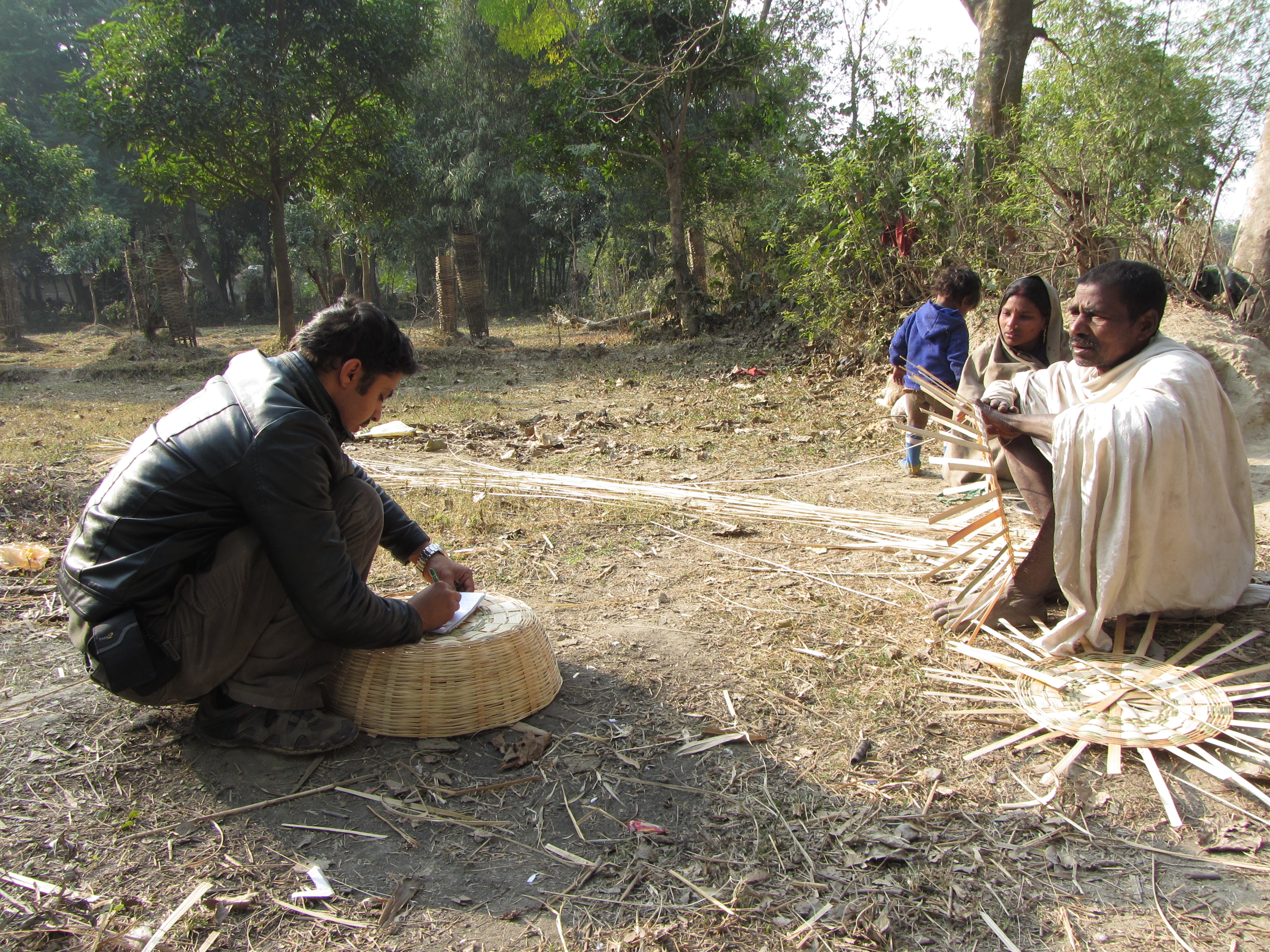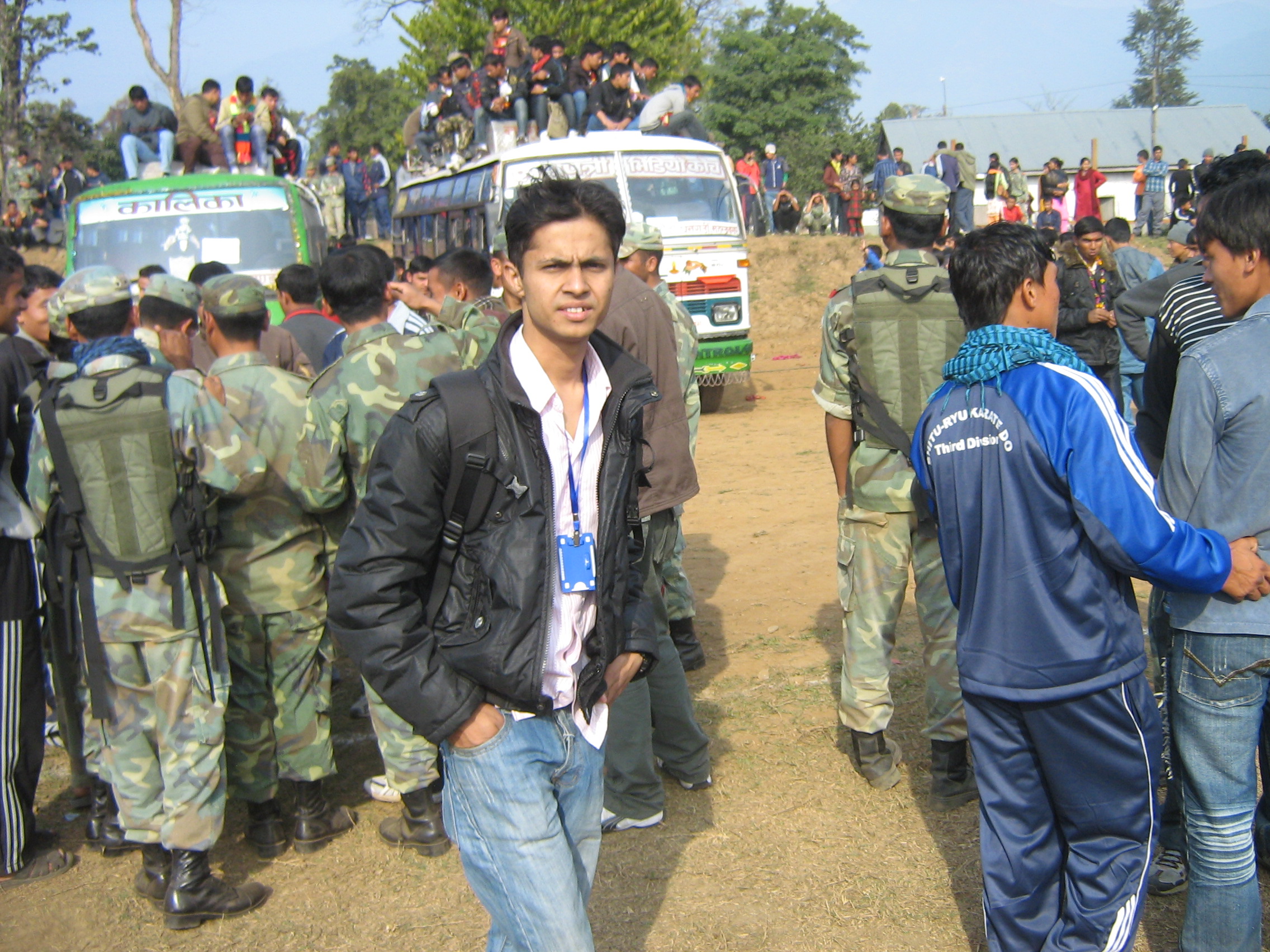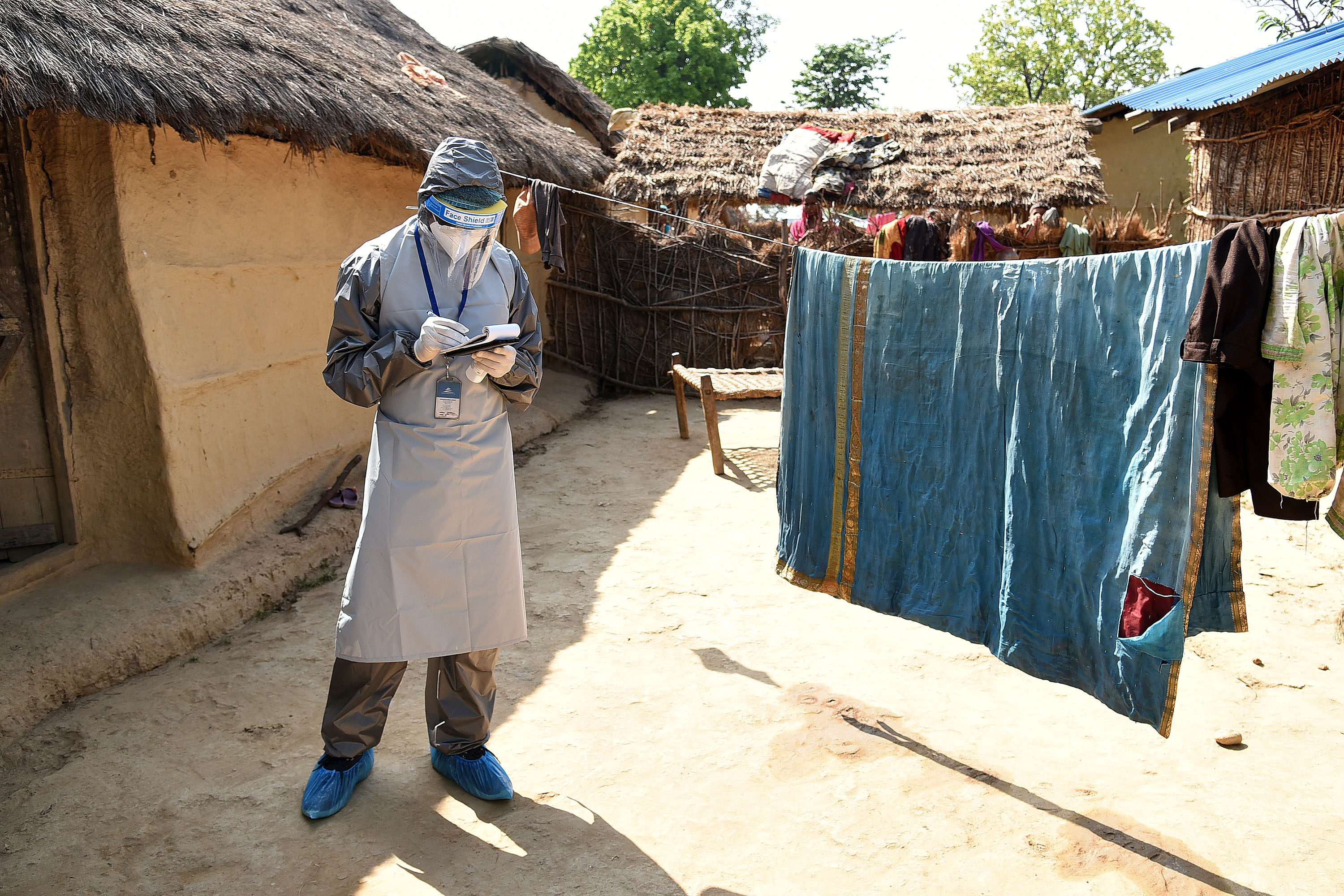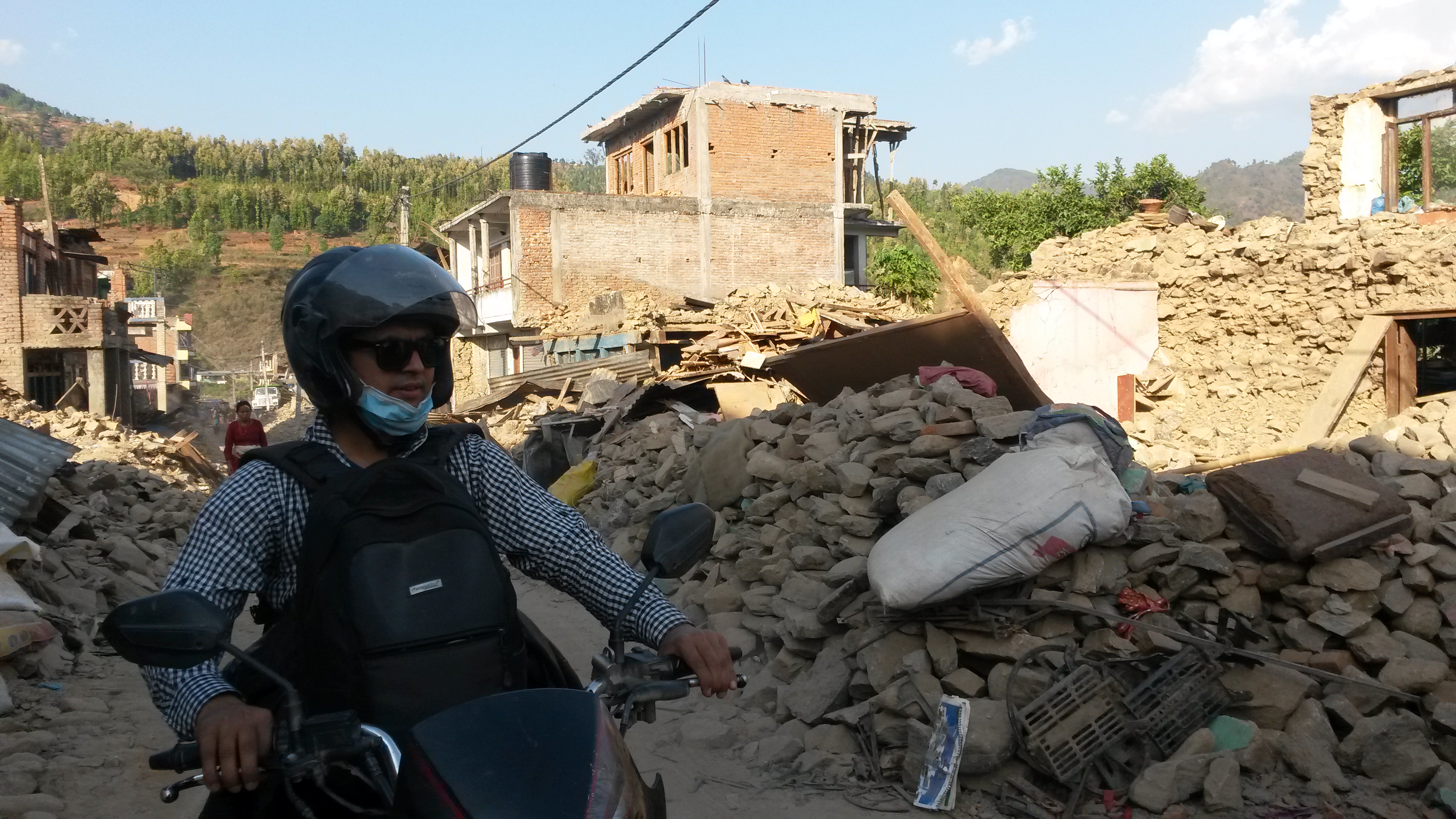
Writing journeys
13 MIN READ

This week, reporter and writer Janak Raj Sapkota writes about how his experimentation with colors and his habit of keeping a journal have helped his writing.

When I started planning this series, I asked a friend to suggest writers whose writing journey I should learn about. He told me that no one he knows works harder at improving his writing, both fiction and nonfiction, than Janak Raj Sapkota. That was enough for me.
Janak's essay does not disappoint. His journey to becoming a journalist, which begins outside the Kathmandu Valley, shows his drive to read, to write, and to learn about Nepal. Though often without libraries or resources, he found a way to find stories. He tells us about his grandfather's travel tales, quotations from Yuvamanch, school essay competitions, keeping a diary, writing bad poems, the favorite books of a revolutionary uncle, the “companionship of colors”, and more.
“I couldn't stop writing,” he says.
Besides Janak's relentless pursuit of reading material and stories, and his thoughtful drive to become a better researcher and writer, what really struck me about this essay was his reminder that “even ordinary people have extraordinary experiences.” These words seem vitally important in a world that moves at a quickening pace, with everyone always in a hurry. Learn to ask people the right questions, he says. Great advice not just for becoming a better journalist and better researcher, but also for becoming a better citizen in a very heterogeneous world.
Janak Raj Sapkota is currently a Senior Sub-Editor at Kantipur Publications. In 2016, he published the non-fiction book Kahar, which chronicles the deep familial and social costs of Nepal's labor migration abroad. He has also published a collection of social essays titled Jeevan Katipaya (2014), and a historical look at Nepali migrations titled Nepali Upanyasma Basaisarai: Dukha Dekhi Dukha Samma (Migration in Nepali Novels: From Hardship to Hardship) in 2019.
Don't miss his story ‘A Nepali Man's Odyssey from Dang to San Diego’ in The Kathmandu Post, June 2019.

In Writing Journeys, every Wednesday The Record highlights the thoughts and reflections of Nepali (and Nepal-based) authors and storytellers. So far we’ve had Shradha Ghale, Kunda Dixit, Niranjan Kunwar, Kesang Tseten, Sujeev Shakya, Tom Robertson, and Kalpana Jha.
Next week: Dipak Gyawali
***
This is how I learned to write
How did I learn to write? It's easy to answer this question. But how did I learn that it is important to write well? Answering this question is not as easy. Because unlike mathematics, creative writing doesn't have pre-defined formulae. Throughout my decade-and-a-half journey in writing news and literature, what I've learned is that good writing is not easy. But regular writing and learning can help create good writing.
During my school days, during the 1990s, I did not get a chance to read a diverse variety of creative books. But I would read the children's magazine Muna. In lower secondary school, I was able to read monthly newspapers like Yuvamanch and Nawayuva. I rarely got to read stories, novels, or other creative writings not part of the school course. But I did get to hear travel narratives and some religious stories from my grandfather. When I was able to hear and read stories outside of the school curriculum, I felt like I was discovering a new world.
As my government school didn't have a library, I didn't even know what books outside the school curriculum could be. My cousin lived in Birgunj and whenever he visited my home in Chitwan, he would bring with him some filmy newspapers like Saras Salil. When I read the stories, with those colorful pictures, I felt overjoyed. My friends with relatives in Kathmandu used to bring Hindi comic books to school. When I read them, I realized that books could open a whole new unseen world.
During my school years, I was interested in drawing, making sculptures out of mud, making handicrafts from tree roots and straw. Those practices helped me to understand the importance of diversity in colors, the meaning that sprung from their mixture and their minute dots, lines, and shapes. Through closeness with art, I started to understand that every shape has meaning, mixing one color with another color creates new colors. And my curiosity to learn how to present pictures and handicrafts in a different way each time so as to appeal to as many people as possible also grew.
My friends used to say that tree leaves are green. But I would reply that leaves are not limited to green color -- there is a mixture of different shades of green. My friends used to say that shadows are unimportant. I would reply that the speed of light and its distance determines the shadow's shade and so, looking at the shadow can help us talk about light. I started learning these things from the companionship of colors.
At that time, I had no idea that the curiosity growing inside my child mind could be used for creative writing. But now, I feel that the curiosity, the questions, and the way of viewing, understanding, and imagining existing structures in a different perspective developed my capacity to think innovatively.
During my school life, I wrote many poems. But they were not very good. I used to write essays as well. I never missed the chance to compete in inter-school discussions and speaking competitions. While participating in such competitions, I practiced by writing. To make an argument, I would collect quotes from renowned writers, philosophers, and thinkers. While reading new books, I would note down lines and paragraphs that touched me. Writing helped me to memorize them and understand what kinds of sentences are important. While in class 9, my article was published in the regional daily national newspaper. That boosted my confidence in writing.

From my school days, I had the habit of writing a diary. Near or far, wherever I went, I wrote down travel memories. Many people find writing a diary boring and that only famous people write a diary. But even things considered small carry special value. The diary of little people, the hidden corners of an ordinary life, the calculations of simple daily life can help to reveal a glimpse of society.
Even if it is not helpful, at some later point in time, we will be able to look back and reflect by reading our own life stories. Our diaries can act as a special window into a past period of time. Many things can go into the diary: day-to-day feelings and perceptions, the events you have seen or experienced, your shifting routines and habits, and the stories you hear.
At that time, I used to send poems and essays through the post office to be published in newspapers and magazines. Those practices encouraged me to write more. I came to realize that no boundary limits creative writing. And that real writing is very different from writing an exam.
After reaching class 9, I got a chance to read books outside of the school curriculum. I had an uncle near my home, Chetnath Chapagain. He was involved with the underground Maoist party and wrote revolutionary books in verse. I would talk to him while taking the goats out to graze. He used to tell me stories written by Russian and Chinese revolutionaries. From him, I got to read books like Yang Mo’s The Song of Youth and Maxim Gorky’s Mother. Those books led me to realize the power of good stories and helped me to understand how characters can remain in people’s hearts for many years.
When I joined Plus Two schooling, I started reading books from the library. At that time, I regularly read stories and novels of Parijat, BP Koirala., Dhurba Chandra Gautam, and Bhawani Bhicchu, including literary magazines like Madhupark and Garima.
Studying journalism taught me to ask questions and follow my curiosities. My inquisitive nature made me realize that every ordinary person has a story inside them, that it takes special skills to dig them out. People of every caste, language, religion and culture all have different stories within them. People of every skill, occupation, and qualification have different experiences. I realized that even ordinary people have extraordinary experiences. After understanding this, I learned that besides reading books, communicating with people helps us to learn and understand more. This realization helped me think and write in a more thoughtful and creative way.

Over the course of a decade, I travelled to more than 60 districts of Nepal, interviewed people in hundreds of villages. Those interactions made me realize that, if only we learn to question people in the right way, then ordinary people have numerous interesting stories. For example, after the earthquake of 2015, I reached Rampur village in Okhaldhunga district. A woman from the Dalit community I met there said, “बसेर बोल्दा कसेरमा पर्छ । उठेर बोल्दा हावाले लान्छ। हाम्रो कुरा कसैले सुन्दैन् ।” (When we speak while sitting, we end up on the garbage heap. When standing and speaking, the wind takes our speech. Nobody hears our voice.). Her words show the reality of life for Dalits, and especially Dalit women. Dalits often feel discarded by society, like trash.
After writing an anthology of essays called Jivan Katipaye, a non-fiction book called Kahar: A Society Disoriented by Labor Migration, and investigative writing Nepali Upnsyama Basaisarai: Dukha Dekhi Dukha Samma, I realized that writing is not easy. But after remembering that everyone can do small tasks, I began to feel that I couldn't just stop writing. Writing is letting our imagination fly but such flight takes place with our feet still on the ground. Writers do deep studies of their characters, background, plot and the world they are trying to create. Writing fiction happens from the creative process of collecting knowledge from books, travelling or repeated discussions with interesting characters. But with non-fiction, creative presentation is important but even more important is deep understanding of the subject you are writing about.
At first, I used to get excited to write about ‘big’ subjects. I used to think that writing about abstract subjects using complex vocabulary was impressive. But I was wrong. Within one subject there are numerous sub-topics. In my writing journey, I learned that instead of selecting complex subjects, it's better to dive deep inside narrow subjects, and write in a simple, clear manner. But writing simply about a complex subject is as difficult as taking a black-and-white photo of a sunset.

While writing non-fiction, first, we must be clear about the subject. When I select a subject, I collect and read many related books, newspapers, and journal articles. I interview people who know the subject. Doing this helps me see why this particular subject is important, whether I am qualified to write about it, and what style others have written about it. This makes writing nonfiction organized and easy.
Different mediums -- movies, documentaries, paintings, music, and art -- can all aid writers write in different patterns and formats. Fiction can help writers of nonfiction in thinking creatively, in building their imaginations. Likewise, fiction helps to show the minute details of every subject, to understand that people live with and within different mindsets and contexts, to know that inside every person often hides other personalities. Journal writing helps to get a microscopic view of the subject and related principles while newspaper writing helps to identify the core of the subject, to link arguments to lead towards a conclusion.
For writers, each piece of writing is like sitting for an exam. Whatever we write won't be perfect in a single attempt. Enthusiastic writers need to read their own writing and rewrite again and again. Deep study of the subject, background research, and discussions with relevant experts help make writing more readable.

Tom Robertson Tom Robertson, PhD, is an environmental historian who writes about Kathmandu and Nepali history. His Nepali-language video series on writing, 'Mitho Lekhai', is available on Youtube. His most recent article, 'No smoke without fire in Kathmandu’, appeared on March 5 in Nepali Times.


News
3 min read
Leaders across the political spectrum react to hastily enforced ordinances
Features
3 min read
Shortage of protective gears, supplies and ventilators in Nepal likely to cripple medical interventions against Covid19
Features
5 min read
From the CJ on down, Nepal’s top-rung judges have amassed a track record of questionable verdicts
COVID19
News
4 min read
By not focusing on contact tracing and other measures, the government is missing the whole point of clamping lockdowns
Writing journeys
8 min read
In this edition of Writing Journeys, novelist and translator Manjushree Thapa illustrates her difficulty in getting from draft to draft and her complicated relationship with writing.
Writing journeys
8 min read
Kathmandu University professor Laxman Gnawali relates a particular instance from his own writing journey that taught him how to better teach writing to young students.
Features
4 min read
A physician and a contact tracer on the frontline of Nepal’s Covid-19 pandemic
Writing journeys
12 min read
In this edition of Writing Journeys, Tom Robertson shares hisown insights on learning to write well, especially during thislockdown.